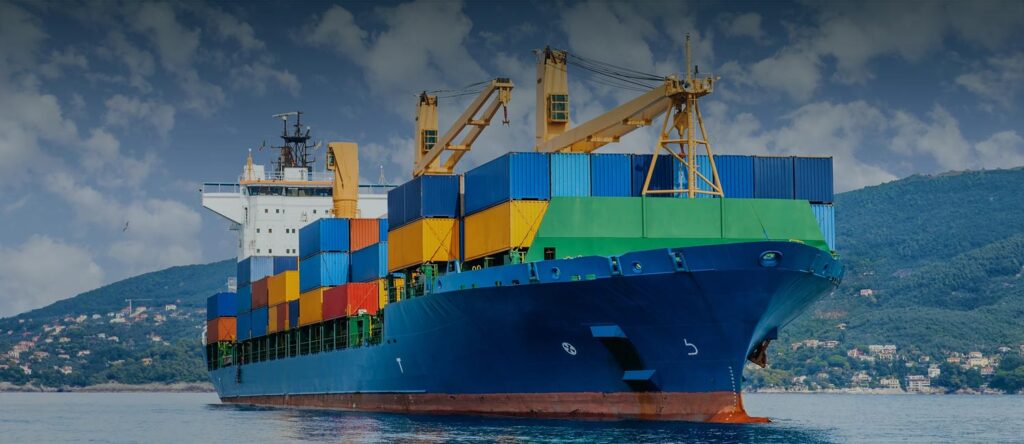- By Della tj
- October 16, 2025
- Sea Freight, Shipping
Choosing professional sea freight from China to Italy ensures businesses maintain cost efficiency, reliability, and control over large cargo shipments. This route remains vital for trade in furniture, machinery, textiles, and consumer goods, helping importers manage supply chains efficiently while minimizing transport expenses.
Why Choose Professional Sea Freight from China to Italy?
Selecting professional sea freight guarantees affordable and dependable logistics for importers managing large shipments. Unlike air freight, sea transport supports heavy loads at a fraction of the cost.
Moreover, Italian ports like Genoa, Trieste, and Venice connect seamlessly to China’s Shanghai, Shenzhen, and Ningbo terminals, optimizing delivery schedules for stable supply chain operations.
| Freight Mode | Average Cost (40ft) | Transit Time | Key Advantage |
|---|---|---|---|
| Sea Freight | USD 1,250–1,700 | 28–35 days | Cost-efficient for bulk goods |
| Air Freight | USD 6,500–8,000 | 5–8 days | Fast for urgent shipments |
| Rail Freight | USD 3,000–4,200 | 20–25 days | Balanced speed and cost |
What Are the Main Shipping Routes from China to Italy?
Trade routes between the two countries cover major ports and logistics hubs.
Common routes include:
- Shanghai → Genoa (Mediterranean focus, 30–32 days)
- Shenzhen → Venice (ideal for electronics and consumer goods)
- Ningbo → Trieste (efficient for Central and Eastern Europe distribution)
These routes pass through the Suez Canal, which remains the most strategic maritime corridor connecting Asia and Europe.
How to Estimate Sea Freight Costs Accurately?
Understanding shipping costs helps businesses plan budgets and pricing. Rates depend on factors such as container size, cargo type, and seasonality.
Here’s a simplified breakdown:
| Cargo Type | Container Size | Average Rate | Transit Time |
|---|---|---|---|
| Furniture | 40ft HQ | USD 1,500 | 32 days |
| Machinery | 20ft | USD 1,250 | 30 days |
| Textiles | 40ft HQ | USD 1,450 | 33 days |
Additional costs may include:
- Customs clearance: USD 100–200
- Port handling: USD 150–300
- Insurance: 0.3–0.5% of cargo value
In addition, working with a professional freight forwarder can reduce hidden fees and avoid unexpected surcharges.
Which Documents Are Needed for Sea Freight from China to Italy?
Smooth customs processing depends on accurate documentation. Below is a checklist of essential shipping papers:
| Document | Purpose |
|---|---|
| Bill of Lading (B/L) | Confirms ownership and shipment details |
| Commercial Invoice | Declares goods’ value for customs |
| Packing List | Lists item quantities and weight |
| Certificate of Origin | Verifies product source |
| Import License (if required) | For regulated goods like chemicals |
| Insurance Certificate | Protects against shipping damage |
Ensuring all paperwork matches the cargo description prevents delays or fines during clearance.
How Long Does Professional Sea Freight Take from China to Italy?
Transit time varies by route and port. On average, 28–35 days are required.
Factors influencing duration include:
- Port congestion
- Customs inspection
- Vessel schedule alignment
| Route | Transit Time | Remarks |
|---|---|---|
| Shanghai → Genoa | 30–32 days | Most stable and popular |
| Ningbo → Venice | 31–34 days | Suitable for mixed cargo |
| Shenzhen → Trieste | 28–30 days | Faster for southern shipments |
To illustrate, a Shenzhen–Trieste shipment containing 12 tons of electronic parts took 29 days port-to-port, costing USD 1,380, including local fees.
Real Case Studies of Sea Freight from China to Italy
Case 1:
A furniture manufacturer shipped 40ft container (28 CBM) from Ningbo to Genoa.
- Shipping cost: USD 1,480
- Transit time: 31 days
- Mode: FCL (Full Container Load)
- Result: Delivered to Milan warehouse on schedule, saving 65% compared to air freight.
Case 2:
An Italian importer transported textile rolls (15 tons) from Shenzhen to Venice.
- Cost: USD 1,420
- Transit time: 32 days
- Mode: LCL (Less than Container Load)
- Result: Smooth customs clearance under EUR.1 certificate.
How to Optimize Your Sea Freight Efficiency?
Efficiency starts with cargo planning and partner selection.
Below are proven ways to streamline your shipping process:
- Consolidate LCL shipments to cut cost per cubic meter
- Book early to secure favorable vessel space
- Work with an experienced freight forwarder for real-time tracking and customs support
- Use digital tools to manage documentation and schedules
Furthermore, aligning your delivery schedule with supplier production ensures minimal warehouse downtime in Italy.
Why Partner with a Professional Freight Forwarder?
A professional forwarder simplifies complex logistics while keeping costs under control. Their expertise ensures compliance with international regulations and prevents documentation errors.
They also:
- Provide door-to-door solutions
- Handle customs brokerage and insurance
- Offer real-time shipment tracking
- Advise on optimal container selection
Ultimately, professional sea freight service providers bridge the gap between Chinese manufacturers and Italian importers with speed, safety, and transparency.
Conclusion
In summary, professional sea freight from China to Italy provides the ideal balance of cost efficiency, capacity, and reliability.
By choosing expert freight partners, maintaining complete documentation, and optimizing shipment timing, importers can ensure smooth delivery across Europe.
To summarize, the right logistics provider transforms complex international shipping into a seamless trade experience.
Request a Quote
Need a tailored solution for your shipping from China?Let TJ China Freight Forwarder assist you with reliable, cost-effective service.
FAQ:
Q1.What is the cheapest way to ship from China to Italy?
Sea freight is the most affordable option for large shipments, offering low rates and efficient delivery schedules.
Q2.How much does a 40ft container cost from China to Italy?
A 40ft container typically costs between USD 1,250 and 1,700, depending on cargo type and shipping season.
Q3.What is the fastest sea route from China to Italy?
The Shenzhen–Trieste route averages 28–30 days, making it one of the quickest maritime corridors.
Q4.Do I need insurance for sea freight shipments?
Yes, insurance protects against loss or damage. Most policies cost around 0.3–0.5% of cargo value.
Q5.Can I track my sea freight shipment?
Absolutely. Professional forwarders provide online tracking systems to monitor real-time cargo movement from origin to destination.




